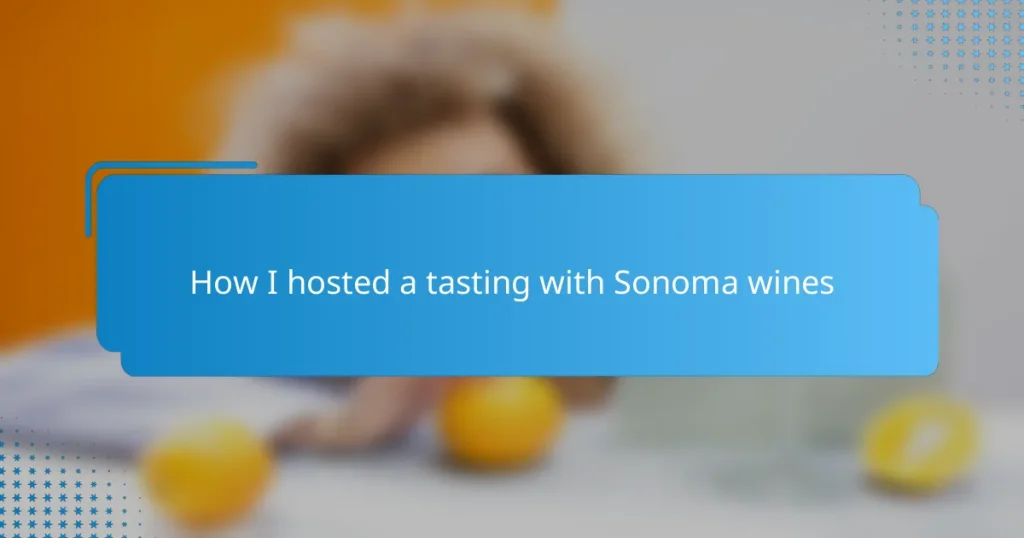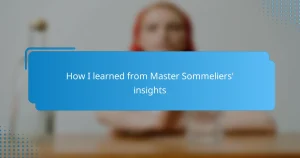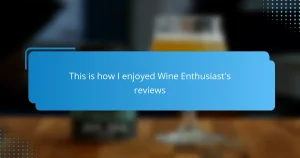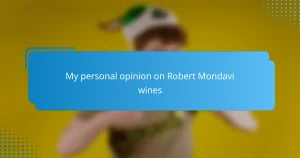Key takeaways
- Sonoma’s diverse geography enables a wide variety of grape cultivation, enhancing the tasting experience with distinct flavors and stories.
- Curating a balanced selection of wines and creating a welcoming atmosphere are crucial for an engaging wine tasting event.
- Food pairings with Sonoma wines elevate both the culinary and wine experience, highlighting the significance of harmony in flavors.
- Sharing personal experiences and wine facts fosters deeper connections and enriches the overall tasting enjoyment for guests.
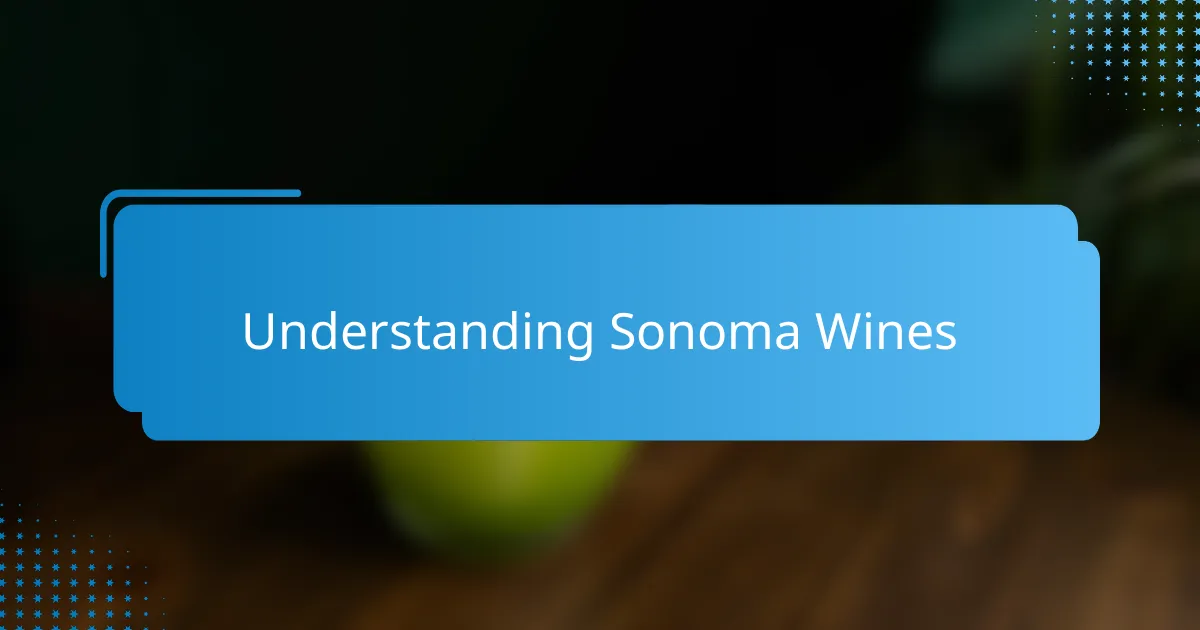
Understanding Sonoma Wines
Sonoma wines have always intrigued me because of their incredible diversity. From crisp Chardonnays to bold Zinfandels, the region offers something for every palate. It made me wonder—how can one wine region capture such a wide range of flavors?
I’ve found that Sonoma’s unique geography plays a huge role. With its varied climate zones, vineyards can grow numerous grape varieties successfully. This complexity is what made me appreciate each pour during the tasting as not just a drink, but a story of place and passion.
Have you ever tasted a wine that felt like it belonged somewhere specific? That’s exactly how Sonoma wines connect you to the land. Understanding this connection deepened my experience and made the tasting much more memorable.
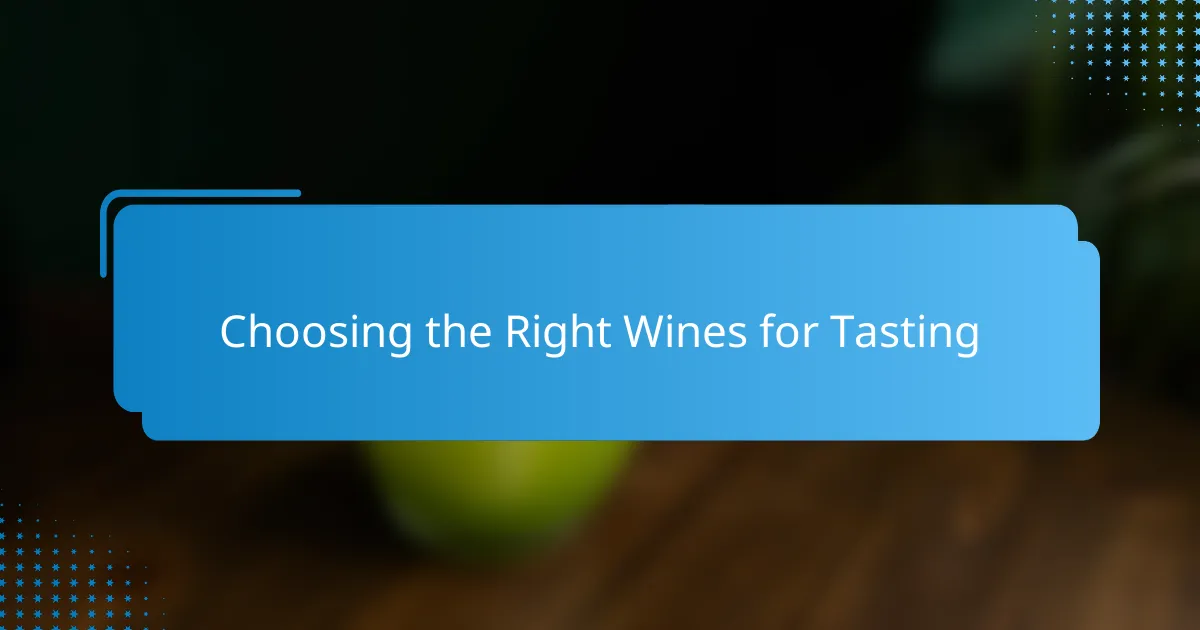
Choosing the Right Wines for Tasting
When I set out to choose wines for the tasting, I focused on selecting a variety that would showcase Sonoma’s remarkable range. It wasn’t just about picking popular labels, but finding bottles that told different parts of Sonoma’s story — from bright, crisp whites to rich, spicy reds. Have you ever noticed how a well-curated wine flight can take you on a journey? That’s exactly what I aimed for.
What struck me was how important balance is when choosing wines. I wanted each wine to shine on its own, yet flow smoothly from one sip to the next. For example, starting with a refreshing Sauvignon Blanc helped awaken our palates before moving into a more complex Pinot Noir. This progression kept everyone engaged and curious, sparking conversations about flavor and texture.
Sometimes, I rely on trusted local recommendations or small-production wines that feel a bit hidden, adding an element of surprise. Including a less-known Sonoma varietal made the event feel special—it’s like sharing a secret with friends. Doesn’t uncovering new favorites make the tasting even more exciting? For me, that moment of discovery is the heart of hosting a truly memorable wine experience.
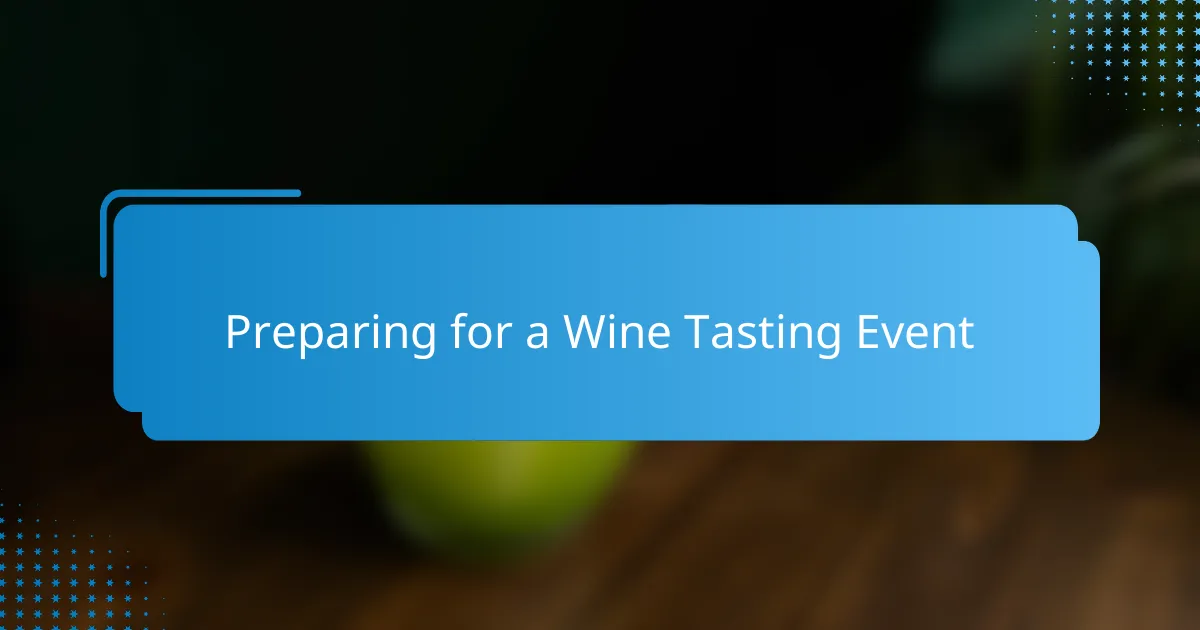
Preparing for a Wine Tasting Event
Preparing for a wine tasting event requires more than just picking bottles—it’s about creating the right atmosphere. I found that setting up a comfortable space with good lighting and enough room for everyone to relax made all the difference. Have you ever noticed how your surroundings can influence your mood and focus during a tasting? For me, a welcoming environment helps the wines speak louder.
I also paid careful attention to the accessories. Clean glasses for each variety, proper corkscrews, and even simple palate cleansers like water and mild crackers helped keep the experience smooth. At one tasting, I learned the hard way that guests sip more thoughtfully when they have the right tools at hand. It’s a small detail but crucial if you want the event to flow effortlessly.
Finally, I always prepare a bit of background on each wine. Jotting down tasting notes and fun facts about the vineyard sparked lively discussions and made guests feel more connected. Does knowing the story behind a wine change how you taste it? In my experience, it absolutely does—it turns an ordinary pour into a shared adventure.
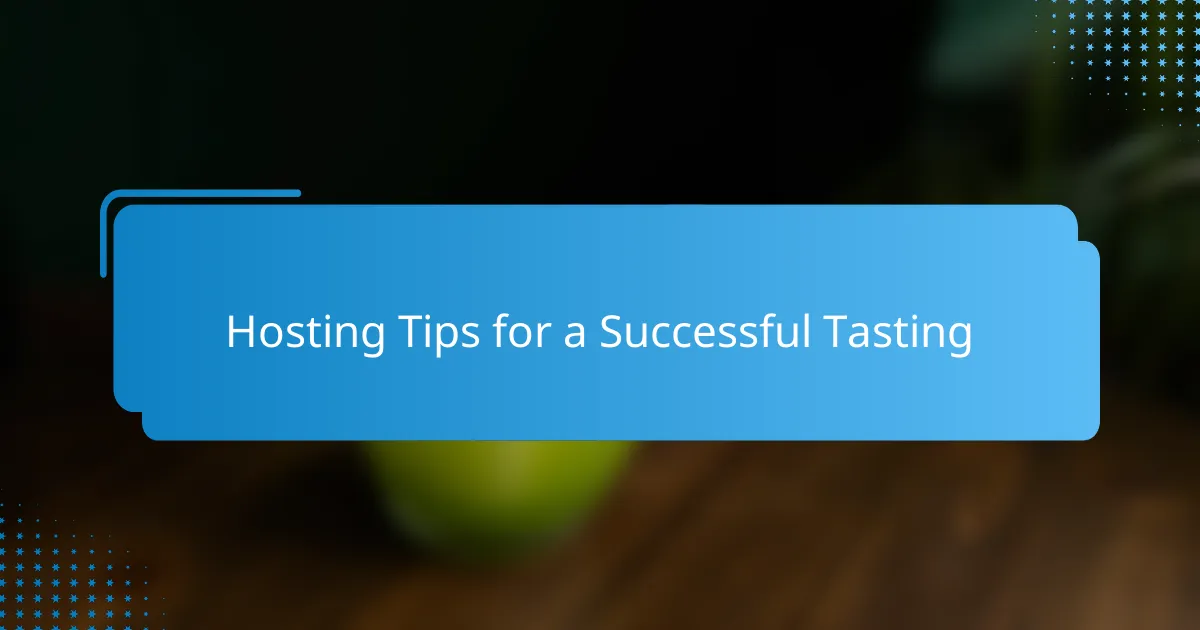
Hosting Tips for a Successful Tasting
One thing I’ve learned is that pacing matters. Pouring smaller amounts and giving everyone time to savor each wine encourages thoughtful tasting rather than rushing through. Have you ever felt overwhelmed by too many flavors at once? Slowing down lets you appreciate the nuances and sparks better conversations.
I also find that encouraging guests to share their impressions creates a warm, interactive vibe. Asking simple questions like “What do you notice first?” or “Does this remind you of anything?” breaks the ice and deepens everyone’s connection to the wines. It’s amazing how sharing thoughts turns a quiet sip into a lively exploration.
Lastly, I always keep snacks simple but complementary. Something like mild cheese or toasted nuts balances the flavors without overpowering them. From my experience, the right bites can refresh the palate and keep energy up, making the whole evening more enjoyable for everyone. Have you tried pairing something unexpected that ended up being perfect? Those little surprises always stick with me.
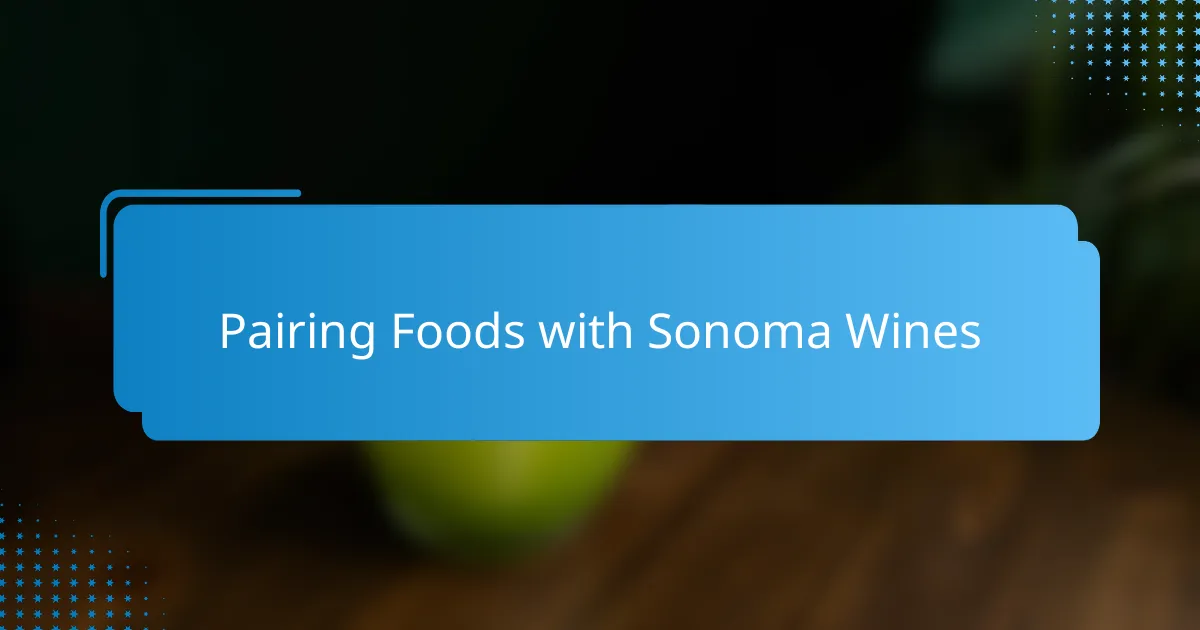
Pairing Foods with Sonoma Wines
Pairing foods with Sonoma wines felt like unlocking a delicious secret. When I served a buttery Sonoma Chardonnay alongside roasted chicken with herbs, the wine’s creamy texture and bright acidity danced perfectly with the savory flavors. Have you ever noticed how the right combination can make both the wine and food taste better than alone? That harmony is what makes pairing so rewarding.
I also discovered that Sonoma’s Zinfandels love bold, spicy dishes. One night, I paired a rich Zinfandel with a smoky barbecue ribs platter, and the wine’s peppery notes elevated the smoky meat to another level. It’s fascinating how a robust wine can stand up to intense flavors without losing its character. Do you have a favorite pairing that surprised you like this?
For lighter bites, I leaned on Sonoma’s crisp Sauvignon Blanc, which was fantastic with fresh goat cheese and citrus salads. The wine’s zesty brightness cut through the creaminess and refreshed the palate between bites. From my experience, matching the intensity of the wine with the food’s weight is key—too heavy or too light, and the balance tips. Isn’t it amazing how these small choices shape the tasting experience?
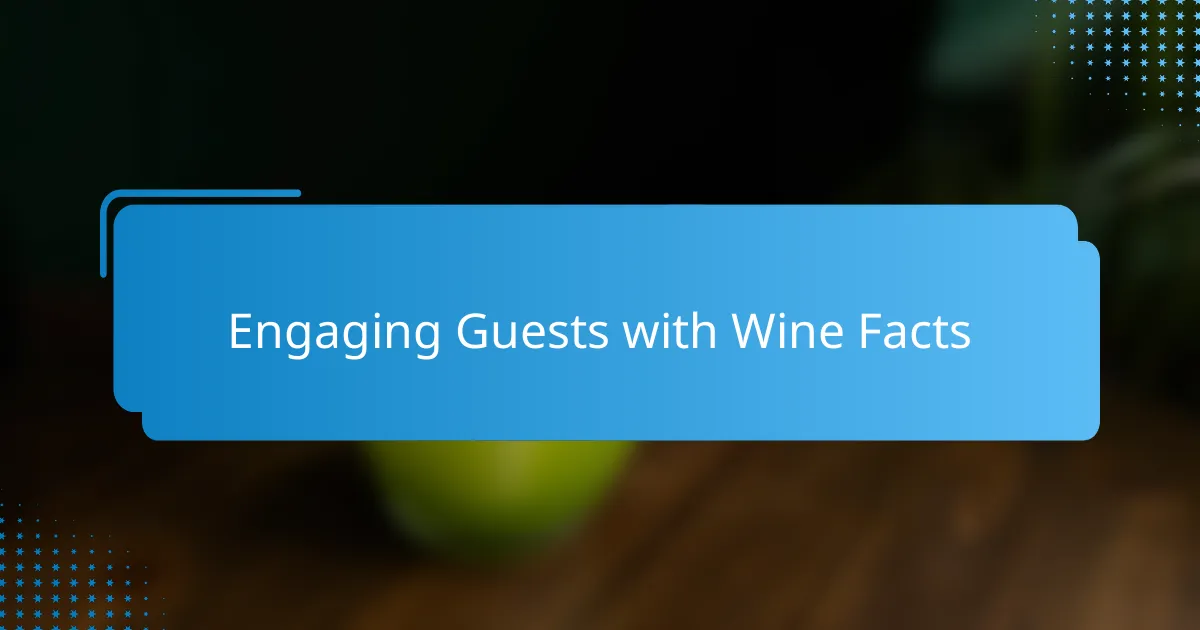
Engaging Guests with Wine Facts
Sharing interesting wine facts during the tasting instantly sparked curiosity among my guests. For example, mentioning how Sonoma’s diverse microclimates create perfect conditions for both delicate Pinot Noirs and robust Zinfandels led to animated discussions. Have you ever noticed how a little detail about where a wine comes from suddenly makes each sip feel more meaningful? I found that these tidbits broke the ice and made everyone more eager to taste thoughtfully.
I also loved weaving in stories about the vineyards—like how some family-run wineries have passed down traditions for generations. One guest shared how hearing about sustainable farming practices changed her appreciation of the wine in her glass. It’s amazing how a simple fact can transform a casual sip into a connection with the land and people behind the bottle. Do you feel that stories enrich the tasting experience too?
Another fun approach I tried was comparing grape varieties side by side and explaining what makes Sonoma’s versions unique. Highlighting that their Chardonnay often carries subtle notes of apple and vanilla—thanks to barrel aging—invited guesses and surprised reactions. I noticed guests were more engaged and asked thoughtful questions because they felt involved rather than just tasting blindly. Isn’t that personal touch what makes a wine event unforgettable?
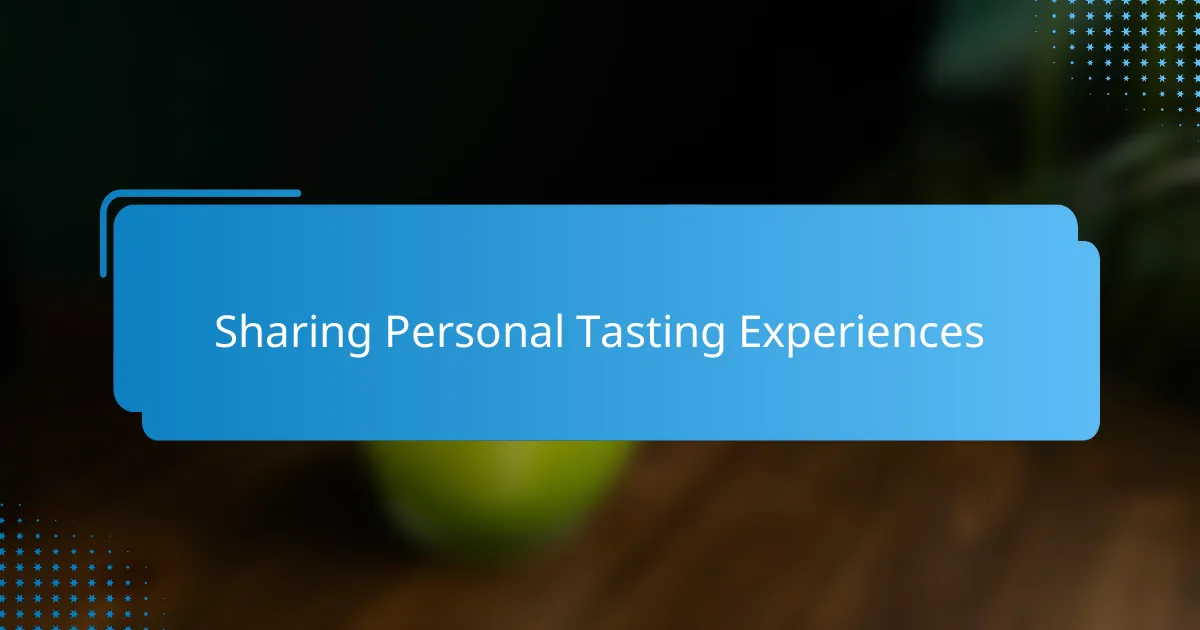
Sharing Personal Tasting Experiences
Pouring that first glass and watching everyone’s eyes light up as they took their initial sip was a moment I won’t forget. It’s fascinating how tasting becomes more than just flavor—it turns into sharing stories and personal memories. Have you ever noticed how a wine can unlock conversations you didn’t expect, revealing each guest’s unique palate and experience?
One evening, a guest described a Pinot Noir as “like walking through a sunlit forest,” and suddenly, the whole table was picturing that vivid scene. Those personal descriptions added layers to the tasting that I hadn’t anticipated. It reminded me that wine tasting is as much about emotional connection as it is about the senses.
Encouraging everyone to share what they noticed—whether it was a hint of berry, spice, or something entirely unexpected—created a warm, inviting atmosphere. I found that these shared impressions not only sparked laughter and debate but also deepened my own appreciation for the wines. Isn’t that what makes hosting tastings so rewarding?
